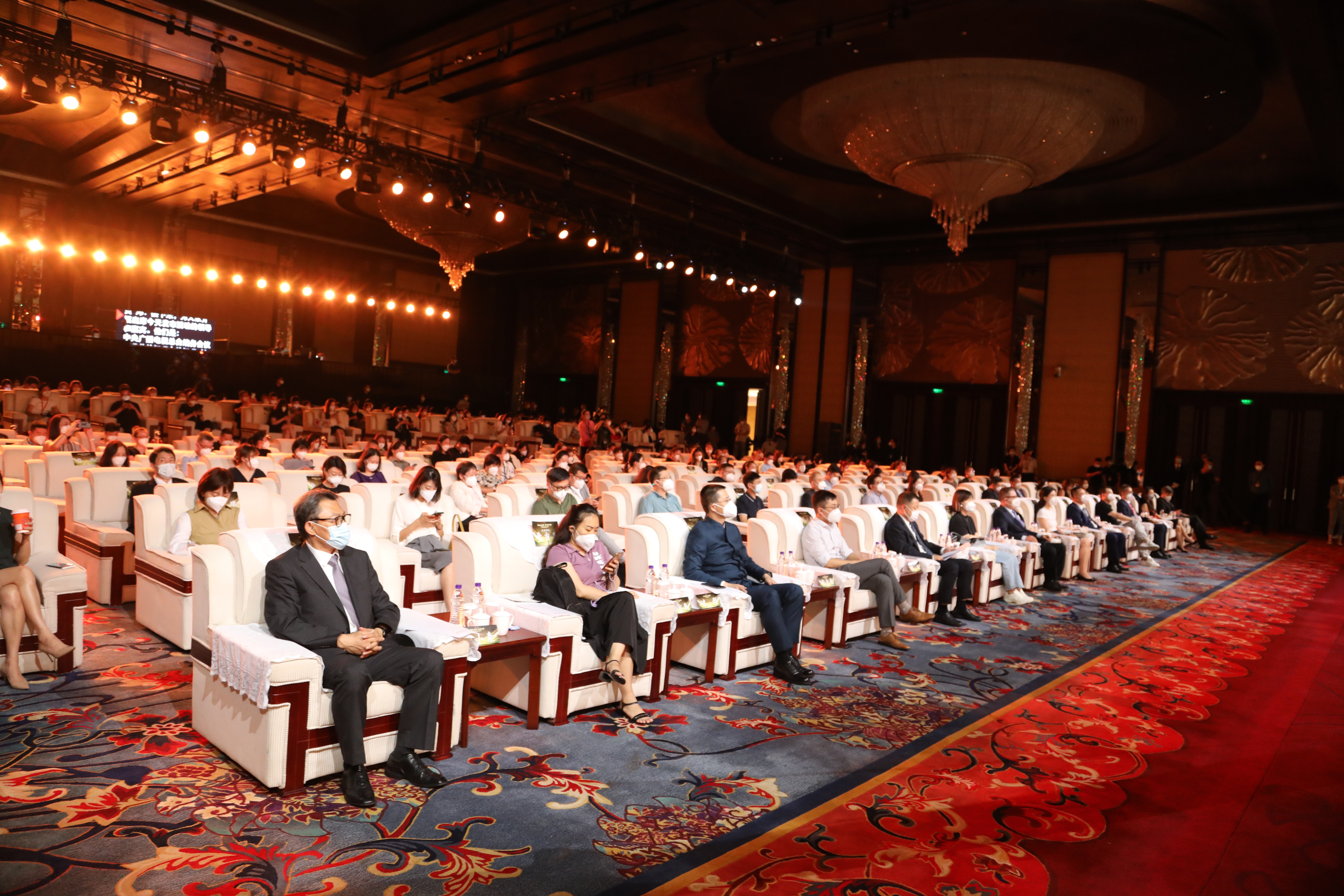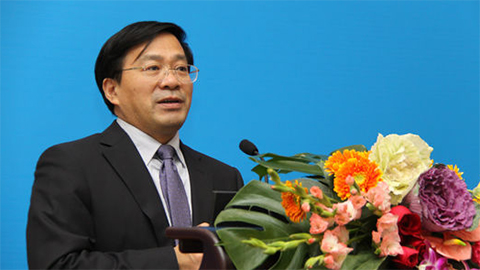The Central Radio and Television General Station released the FIFA World Cup Qatar 2022 Financial Media Communication Service Plan in 2022.

On July 15th, the Central Radio and Television General Station held a press conference on the 2022 FIFA World Cup Qatar 2022 Media Communication Service Scheme in Beijing. Peng Jianming, member of the editorial board of the Central Radio and Television General Station and general manager of the general manager’s office, attended the meeting and delivered a speech.
Cao Yi, director of the Sports Youth Program Center of the Headquarters, Ren Xuean, executive deputy convener of the General Manager’s Office of the Headquarters, Guo Tong, general manager of Central Video Company, secretary of the Party Committee and chairman of CCTV, Tashi Dhondup, Yu Xiaoqing and Xu Lijun, deputy conveners of the General Manager’s Office, Chen Rongyong, deputy secretary of the Party Committee of the General Manager’s Office, and more than 200 representatives of well-known enterprises and advertising companies at home and abroad attended the meeting.

△ Peng Jianming, member of editorial meeting of Central Radio and Television General Station and general manager of general manager’s office
Peng Jianming said in his speech that sports is the common language of all mankind, and FIFA World Cup Qatar 2022 will become a "fire in winter" in 2022, and the blazing flame will illuminate the whole world and warm the hearts of billions of people. As the most important partner of FIFA, CCTV has the exclusive TV and new media copyright and sub-licensing rights of FIFA World Cup Qatar 2022 in Chinese mainland in 2022, and will give full play to its strong advantages in broadcasting sports events, set up a multi-channel and cross-platform media communication matrix, and innovatively produce a series of online and offline quality programs to perfectly present this football audio-visual feast for hundreds of millions of viewers. In order to help enterprises seize the opportunity and serve the brand building of enterprises, after several months of careful planning and design, the product scheme of the World Cup is about to meet with you. The core idea of this scheme design is to deeply integrate the all-media resources of the main station and provide one-stop integrated communication services for major customers, which has achieved many breakthroughs: for the first time, the core time of each channel of the main station has been fully opened; For the first time, in the live broadcast of the World Cup, the cooperative brand elements were presented for a long time and in a large layout; For the first time in the World Cup project, we designed and launched interactive media communication products. For the first time, the world cup communication resources of the new media terminals of the main station were deeply developed. The design of this scheme hopes to make the communication scheme of this World Cup value for money and make the communication effect of brand customers get twice the result with half the effort through resource integration, product innovation, arrangement optimization and service upgrade.Football is a sport full of strength, conveying hope, carrying forward the spirit of unity, cooperation and never giving up. Its charm brings light and heat to everyone’s heart. These valuable spiritual qualities are also the positive energy that the brand needs! Today’s press conference opened the marketing special train for the brand to go directly to the top IP of the World Cup. Let’s work together, hand in hand, and let the brand and football race against time to create a new classic of brand communication and a new legend of sports marketing! My friends, in the vast universe, the earth is round, the sun is round, every planet is round, and football is round. Let’s join hands, enclose a common circle of mankind, gather strength, passion and our love, and strive and create for our common destiny!

△ Cao Yi, Director of Sports Youth Program Center of Taiwan Headquarters
Cao Yi introduced the broadcast report plan of the main station in FIFA World Cup Qatar 2022. The main station will build an "all-media" communication matrix through CCTV-1, CCTV-2, CCTV-5, CCTV-5+, CCTV-13, CCTV-16 and other TV channels, CCTV video, CCTV sports, CCTV net, CCTV news and other new media clients and broadcasting frequencies. At present, the front desk has set up a 160-person front reporting team, which will give full play to its strong front production advantages and build the most cutting-edge, richest and closest World Cup reporting scene with the International Broadcasting Center in Doha, Qatar as the hub. The main station will also fully release the technical advantages of "5G+4K/8K+AI" and light up the World Cup report with the wisdom and intelligence of "science and technology".

△ Ren Xuean, executive deputy convener of the general manager’s office of the reception desk
Ren Xuean interprets the three major market values of sports event communication: "Competitive sports create positive emotional value", "Event suspense inspires unique memory value" and "Integration of communication produces multiplier effect value", which makes top-level events regarded as the best communication resources for brand building by marketing circles. In the face of FIFA World Cup Qatar 2022 marketing opportunities, there are three suggestions: First, if you want to continue to lead, or hope that the brand will overtake in corners and achieve higher growth than competitors, it is the best option to seize FIFA World Cup Qatar 2022; Second, if you want to be strong and walk with the strong, you can become strong. The national platform is unparalleled. Third, if you decide to participate, the reception desk has carefully created a brand-new communication service plan, and each one is selected.

△ General Manager of Central Video Company, Party Secretary and Chairman of CCTV Network Guo Tong
Guo Tong introduced the new media communication scheme of FIFA World Cup Qatar 2022 in 2022. Through all-platform integration, all-media concurrency, and all-traffic aggregation, we will vigorously create a "total station sample" for the dissemination of new media events. Give full play to the unique advantages of "the main station is at the scene", and the new media platforms of the main station, such as CCTV Video and CCTV Sports, will open the full coverage live broadcast of 64 events in the whole schedule from multiple positions and angles, and officially open the home of the national mobile game; At the same time, it will also build a multi-scene, cross-circle, full-chain content ecosystem around the World Cup, and strongly start the World Cup media marketing season.

△ Liu Lihua, Director of the TV Channel Business Department of the General Manager’s Office.
Liu Lihua, director of the TV channel business department of the General Manager’s Office of the General Desk, released the media communication service plan of FIFA World Cup Qatar 2022 in 2022, including legendary series, master series, palace series and supreme series.

He Wei, Long Yang, Shao Shengyi and Ma Fanshu, hosts of the reception desk, presided over the press conference. He Wei, Shao Shengyi and the football commentators Zhu Xiaoyu, Liu Jiayuan and Zeng Kan of the Headquarters explained the highlights of FIFA World Cup Qatar 2022 2022. Singer Laure Shang sang the theme song "Feast of Life" of "Football Feast" live. CCTV Video, CCTV Network, CCTV Audio and Video, CCTV Finance, CCTV Sports Synchronous Live Broadcasting Conference.

















